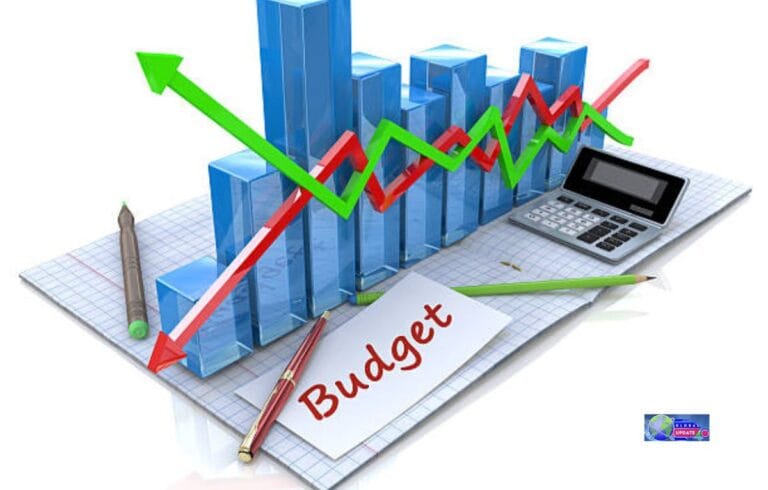The annual budget for 2025–26 has a broader impact than just fiscal policy. It also has direct or indirect effects on monetary policy, reducing poverty, and other related areas.
Long ago, the finance minister said that the next annual budget would not be based on numbers but on strategies.
Taxes, fees, and spending decisions are all part of fiscal policy.
The annual budget impacts various areas, including monetary policy, trade and exchange rate policy, private investment, poverty reduction, human capital development, and other key aspects, both directly and indirectly.
This article outlines the key elements of a transition budget that will help maintain long-term economic stability and lay the groundwork for sustainable, inclusive, and stable progress.
The Annual Budget for 2025-26: A Strategic Approach Beyond Numbers
Over the past few weeks, a notable change has occurred: the country has become more united, mainly due to the presence of an aggressive neighbor, which has prevented politics from becoming too divided.
This political stability is what everyone waiting for and wanting so that tough, unpopular, but necessary economic changes can be implemented. This chance should fully taken advantage of.
Additionally, the FY25 budget result—a positive primary fiscal balance despite the FBR revenue shortfall and the possibility of finishing the year with a small surplus in the current account—lays a strong foundation for the following year.
Some of the structural standards agreed upon with the IMF must implemented to expand the tax base over the next few years.
These include the National Fiscal Pact and, for the first time, the inclusion of provincial finances in the strategy for raising income.
The most significant task for next year, however, is to find a way to maintain spending on social protection, education, and health while also increasing funding for defense and climate change programs.
Due to these advantages and disadvantages, the first step should be to establish a budget and a medium-term policy roadmap in parliament. It will help guide the economy for the next two years and beyond, extending up to 2028.
Under the Memorandum of Economic and Financial Policies, we are required to adhere to the conditions we agreed upon with the IMF for the next two years. It means that officials will have limited room to maneuver.
The level of freedom will be higher after 2028, though. A roadmap like this is necessary to reduce uncertainty and reassure potential investors about the best time to invest in the future.

How to Implement Energy Sector Reforms Successfully
We won’t go over the ongoing reforms that must be part of the roadmap. These include digitizing and documenting the economy, implementing reforms in the energy sector, reducing import tariffs, reforming state-owned enterprises, and overhauling the regulatory framework.
However, we also discuss three other matters that require your immediate attention. For starters, the IMF program has put the right amount of focus on fiscal, monetary, exchange rate, and current account factors.
Balance-of-payments problems occur frequently because there is an insufficient amount of money in the productive sectors of the real economy, such as farmland and industry.
Its deficit indicates a mismatch between total local production and total demand resulting from economic growth. This causes demand for imports to rise.
It is essential to address this imbalance now, as reducing it will take time.
In agriculture, there are strong forward and backward connections with trade, transportation, exports, and industry.
The decline in the production of major crops, particularly cotton and wheat, requires attention.
At the same time, the government needs to stop importing oilseeds, pulses, milk, and other similar goods, which cost between $7 billion and $8 billion annually.
This can achieved with a tailored package designed to help small and medium-sized farmers increase their earnings.
The primary reason these farmers have been unable to increase their output is that the amount of agricultural credit they require for inputs hasn’t kept pace with rising demand.
To cover its budget shortfalls, the government took over the bank’s assets.
Over time, these gaps need to be reduced, so banks need to encouraged to utilize digital tools and innovative methods to reach this underserved group.
The threat of the Indus Waters Treaty compels us to utilize water for irrigation in a reasonable and efficient manner.
The Future of Agriculture: Contract Farming Insights
There has been a quiet shift in the production of corn, potatoes, milk, fruits, and other crops, thanks to contract farming between farmers and processors.
It must pushed everywhere, like the meat and chicken business.
Industrial policy has been under development for some time. It is expected to released, focusing on export-oriented goods that utilize medium to high technology and are competitive on the international market.
This strategy should also attract foreign direct investment (FDI), support joint ventures, particularly the relocation of Chinese businesses, and provide young people with employment opportunities.
The strategy should include building skills, providing technical and vocational training, implementing apprenticeship programs, and fostering partnerships between businesses and universities to enhance the workforce.
Restructuring SMEDA and making it easier for small businesses to obtain loans, while ensuring that Special Economic Zones (SEZs) and Export Processing Zones (EPZs) are fully utilized. The growing industries that produce intermediate goods, like steel, petrochemicals, and refineries, that support downstream industries should all be essential parts of a complete industrial policy.
Second, funding for R&D at public colleges and research institutes, especially in agriculture and industry, has been shockingly low, despite these institutions having considerable potential that remains untapped.
These organizations could beneficial in boosting our productivity and competitiveness if they were given the right incentives and better ways to run their businesses.
It is essential to recall that these groups were primarily responsible for the significant increases in cotton, wheat, and rice production that continued until the 1990s.
Competitive research funds should be the primary source of R&D funding, and researchers should be able to commercialize their patents and inventions into marketable products.

How Can Tax Breaks Foster Innovation in Private Companies?
Additionally, private companies conducting research on medicines, building goods, electronics, and other high-tech products and services should granted tax breaks to encourage them to develop innovative ideas.
Third, the middle class has experienced a decline in real buying power over the last three years due to high inflation, stagnant wages and incomes, substantial taxes, a depreciating currency, and rising utility bills.
With the money they still have, they can’t send their kids to a good school.
As a result, many highly skilled professionals are leaving the country, which hurts academic and research institutions as well as private companies, including multinationals.
At the same time, we need to attract more qualified Pakistanis living abroad so that our industry can become more competitive.
Some figures suggest that people in the middle-income range pay almost three times as much in taxes as those in the business sector.
The upcoming annual budget should lower the income tax rate for working people.
The government should simultaneously lay forth a plan to lower the company income tax rate to 25% and the General Sales Tax (GST) from 18% to 12% over the following five years.
Utility rates should lowered, and the government should implement targeted subsidies to assist those who are most in need.
Banks should also encouraged to offer more consumer loans for items such as mortgages, cars, and durable goods, as middle-income users generally pose a lower credit risk.



